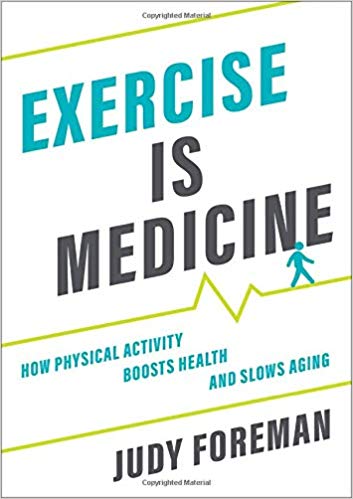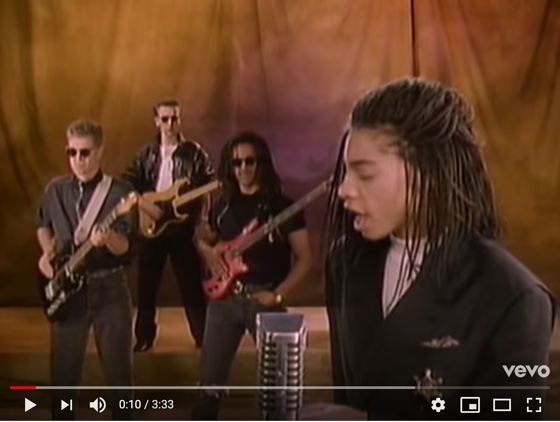
The emphasis on wellness in our culture has grown from a wave into a tsunami over the last five years or so. And while most of the reporting focuses on Boomers and Millennials (as always), Gen X is not only aging well, we’re changing what aging looks like.
Exhibit A: Jennifer Lopez, age 50, at the Super Bowl. Don’t forget Shakira, who’s looking exceptionally strong at 43. And then there’s Paul Rudd, who at age 50 looks like he made an anti-aging deal with the devil.
Of course, these are actors and musicians. Not fair to compare them with ordinary mortals like us, right?
But remember Wilford Brimley, who starred in the 1985 elder-comedy Cocoon? He was 50 at the time. Rue McClanahan, who starred as Blanche Devereaux on The Golden Girls, was 51 when the series launched. Blanche was still living the life, but looking like JLo wasn’t in the conversation.
If celebrity informs what we aspire to look like, then things have changed. I’m 52, and close to being in the best shape of my life. And I’m aiming to remove the “close to being” by the time I hit 53.
If the will is there, the ways certainly are as well. As we move forward, changes in consumer trends, evolving attitudes, and better medical science and technology will allow us to reject what we think of as “old” and be who we want to be.
Just in the nick of time, as Gen X is now firmly in our 40s and 50s. Let’s take a look at some of the latest trends, courtesy of The Future of Wellness 2020 report:
Vintage Cool
I tell my Gen Z kids that we were the first to reject the Boomers, way back in the 80s. But you have to hand it to the generation before ours. Their unwillingness to accept traditional definitions of “old” and their massive spending power allows them to pave the way by changing what aging looks like.
Aging Rebranded: Positively Cool
Sunny Side Up
With around one in three sleeping badly and one in 10 having regular insomnia, getting enough sleep is challenging enough. Once you get that down, you then have to strive for regular light-dark cycles that provide the daily “time cues” needed to reset your circadian clock every single day.
Focus Shifts from Sleep to True Circadian Health
Pure Energy
I’ve certainly been a skeptic, but energy medicine is now moving beyond the “woo woo” stage. Bringing things to a head is the man-made electromagnetic frequencies in our hyper-networked world, which is about to seriously escalate with the rollout of 5G this year.
Travel Well
One trend I’ve embraced in recent years is the idea of wellness tourism. For example, I don’t go anywhere on vacation unless there’s a significant opportunity to hike. Now, the wellness retreat is increasing in duration, amounting to three weeks (or longer) of focusing on your health and wellness — which is enough time to make lasting lifestyle changes.
Keep it 100
In 1965, Japan had 153 people at or over the age of 100. In 2017, there were 67,824! Some of the reasons for this radical longevity you know about as a Further reader (Ikigai and Shinrin-Yoku, for example). But what it really comes down to are cultural traditions of trust, exacting quality in all matters, and a deep reverence for nature.
Down below, we’ve got a related book selection, and Trudi shares the key to becoming a conversational master. So listen up!
Keep going-
P.S. Did someone forward this issue of Further to you? We’d love to have you join us by signing up here.
further: books
Exercise is Medicine: How Physical Activity Boosts Health and Slows Aging
 In Exercise is Medicine, investigative health journalist Judy Foreman finds that we can extend our healthy lifespan, and the key element is exercise. What Foreman uncovers through extensive research into evolutionary biology, exercise physiology, and the new field of geroscience leads to her resounding conclusion that exercise itself is by far the most effective strategy for a long, healthy life. (Amazon)
In Exercise is Medicine, investigative health journalist Judy Foreman finds that we can extend our healthy lifespan, and the key element is exercise. What Foreman uncovers through extensive research into evolutionary biology, exercise physiology, and the new field of geroscience leads to her resounding conclusion that exercise itself is by far the most effective strategy for a long, healthy life. (Amazon)
When you buy a book through us, we get a store credit to buy more books. Thank you!
Become a Master of Meaningful Conversation

By Trudi Roth
Ours is a sandwich generation in more ways than one. When it comes to communication, our parents were brought up on the idea that “children should be seen, not heard.” And so, we raised our kids to “use your words.”
What’s missing in that equation is listening, the selfless and loving act of paying attention to another person. Compounding the demise of engaged conversation is digital culture, which is all about pushing our narratives on social media and sending messages in rapid-fire texting volleys using smiley faces as stand-ins for emotional connection.
I know, even that last paragraph sounds like a rant. Off the soapbox, then, and on to quietly listening to the wisdom of conversation theorists to help repair our fragmented attention.
The language of listening
My meditation teacher often talks about the difference between being self-centered vs. centered in self. When it comes to making genuine human connections, it’s all about tuning out the chatter in your head that’s dying to make its point in order to be fully present to the person who’s speaking.
As theoretical physicist David Bohm wrote on the paradox of communication:
If we are to live in harmony with ourselves and with nature, we need to be able to communicate freely in a creative movement in which no one permanently holds to or otherwise defends his own ideas.
The language of listening is a dialog, which suggests a “stream of meaning,” not a discussion, which breaks communication down into separate points of view. Conversation isn’t about winning a debate; it’s about losing the perspective that what others have to say doesn’t count.
Hear, Hear
Getting to the place where you can commit to full-hearted “unselfish understanding” involves clearing the decks for complete concentration. Psychoanalyst Erich Fromm offered six rules of listening, which essentially advocate for openness, empathy, imagination, and love — because “understanding and loving are inseparable.”
In our fractured times, it can be hard to imagine how to have a copacetic — never mind compassionate — conversation. That’s where relationship expert and therapist Esther Perel jumps in with a simple take on reciprocal communication:
The art of conversation is about healthy amounts of both thoughtful speaking and hardcore listening, asking questions and navigating commonalities and differences.
To practice, she offers inviting friends over for dinner to unify on a single, thought-provoking question, like “What is an aspect from your relationship culture that you’re set on changing?” or “What is something that you wished you had known or been told as a child?”
The meat isn’t just in the answers, but in the give-and-take supported by “long, deep listening.” After all, there’s a lot to love about being heard.
The Art of Conversation (Esther Perel)
further: flashback

Terence Trent D’Arby – Wishing Well
Introducing the Hardline According to Terence Trent D’Arby, 1987
Remember when Terence Trent D’Arby was supposed to be the next Prince and Michael Jackson rolled into one, except better? That was all according to him, by the way. Thing is, he really was (and still is) incredibly talented, but never quite reached that superstar level. Wishing Well remains the jam, though. (YouTube)
further: sharing
Please forward this issue of Further to a friend. Thank you!
